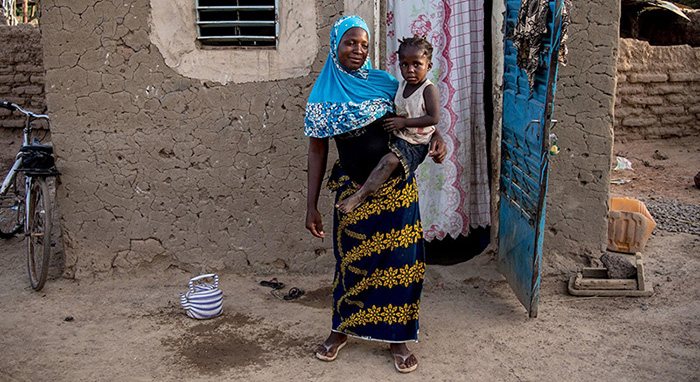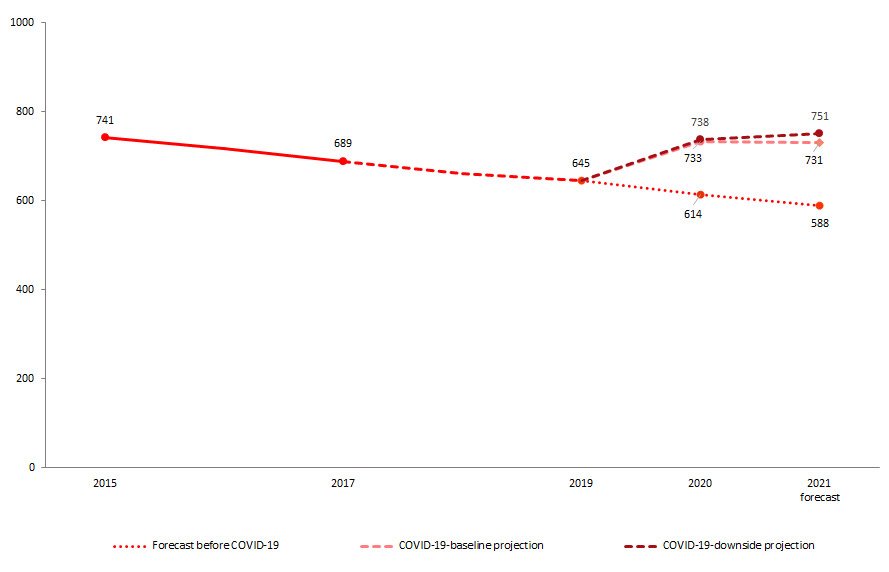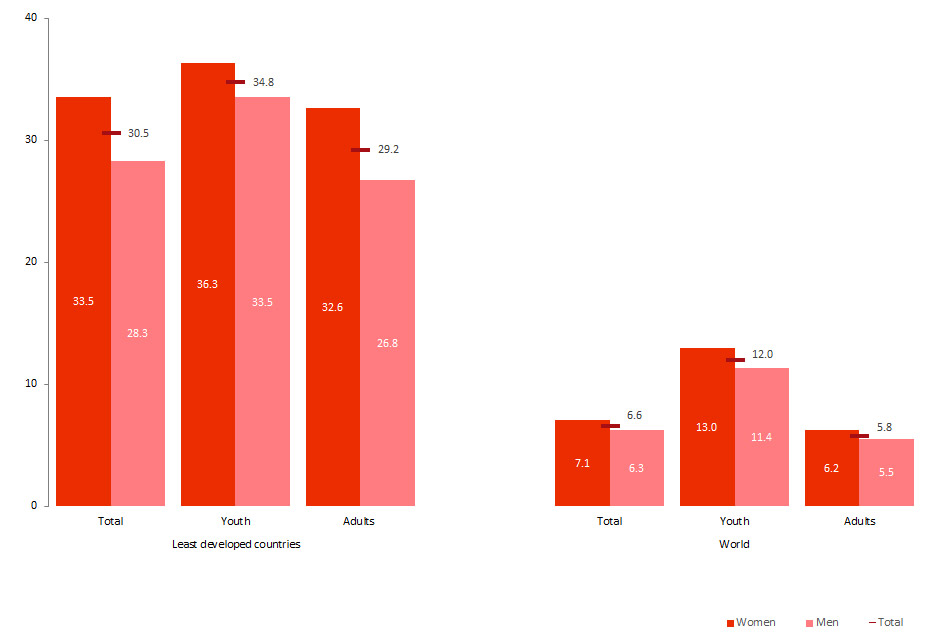How Many People Are Poor 2017 How Many Families Are Poor in 2016
SDG Goals

The Alimata family unit alive in the Center region of Burkina Faso. The parents work 103 hours a calendar week to pay for nutrient. Their one-room domicile has no electricity or toilet, and they spend 3.five hours a week collecting water. They apply charcoal and wood as fuel for their stove.
© Zoriah Miller
The effects of the coronavirus disease 2019 (COVID-19) pandemic accept reversed much of the progress made in reducing poverty, with global farthermost poverty rising in 2020 for the outset time since the Asian financial crisis of the late 1990s. Fifty-fifty earlier COVID-19, the world was non on rails to achieve the goal of ending poverty by 2030, and without immediate and significant action, it will remain across reach. The crisis has demonstrated more clearly than ever the importance of disaster preparedness and robust social protection systems. While the number of countries with disaster risk reduction strategies has increased substantially, and many temporary social protection measures have been put in place in response to the pandemic, increased efforts are needed on both fronts to ensure the most vulnerable are protected.
COVID-xix has led to the first ascent in extreme poverty in a generation
Before the COVID-19 pandemic, the share of the globe'south population living in extreme poverty fell from 10.i per cent in 2015 to ix.three per cent in 2017. This ways that the number of people living on less than $1.90 per day dropped from 741 one thousand thousand to 689 million. Notwithstanding, the charge per unit of reduction had slowed to less than one-half a percentage point annually between 2015 and 2017, compared with one percentage signal annually between 1990 and 2015.
The pandemic has compounded the threats to progress raised by disharmonize and climate change. Estimates advise that 2020 saw an increase of betwixt 119 million and 124 million global poor, of whom threescore per cent are in Southern Asia. Nowcasts point to the offset rise in the extreme poverty rate since 1998, from 8.iv per cent in 2019 to 9.5 per cent in 2020, undoing the progress made since 2016. The impacts of the pandemic will not exist brusk-lived. Based on electric current projections, the global poverty rate is expected to be 7 per cent (around 600 1000000 people) in 2030, missing the target of eradicating poverty.
Number of people living below $i.90 a day, 2015¬–2017, 2018–2020 nowcast, and forecast before and after COVID-nineteen (millions)

Working poverty disproportionately affects women and youth, and the pandemic is likely to magnify those disparities
The share of the world'south workers living in extreme poverty fell by more than one-half from 2010 to 2019 – from 14 per cent to 6.6 per cent. However, lockdowns and related public health measures due to COVID-19 have severely affected the breezy economic system, where the vast majority of the working poor are employed. The related income losses threaten to whorl dorsum global progress on reducing working poverty.
Although the gender gap in working poverty globally has narrowed over the years, a substantial gap persists in many parts of the globe, particularly in the least developed countries (LDCs). There, 1 third (33.5 per cent) of employed women were living in poverty in 2019, compared with 28.3 per cent of employed men. Worldwide, young workers are twice as likely to exist living in poverty as adults, reflecting lower earnings and poorer quality jobs. Since the COVID-xix crisis has had a disproportionate bear upon on the livelihoods of women and young people, information technology is likely to exacerbate these longstanding disparities.
Proportion of employed population living beneath $ane.ninety a mean solar day, 2019 (percentage)

Governments have put new social protection measures in place, merely almost are only temporary
Social protection measures are fundamental to preventing and reducing poverty across the life cycle. Nevertheless, by 2020, only 46.ix per cent of the global population were finer covered by at least one social protection cash benefit, leaving equally many as 4 billion people without a social safety net. The COVID-19 crunch has demonstrated the importance of social protection systems to protect people'southward health, jobs and incomes, every bit well as the consequences of high coverage gaps. As a consequence, many new social protection measures were introduced in 2020: between 1 February and 31 December, the Governments of 209 countries and territories announced more 1,600 such measures in response to the crisis, but well-nigh all (94.7 per cent) were curt term in nature.
Before the pandemic, most of the population (85.four per cent) in high-income countries was effectively covered by at to the lowest degree one social protection benefit, compared with just over one 10th (13.4 per cent) in low-income countries. The coverage gap is even greater for those considered vulnerable, only 7.8 per cent of whom were covered by social assist in low-income countries.
Proportion of full population effectively covered by at least one social protection benefit and vulnerable persons covered past social help, by income-level of country, 2020 or latest available twelvemonth (pct)
Good results from a global initiative to reduce disaster take a chance could be undermined by the pandemic
Disasters and their firsthand impacts threaten to reverse development gains and slow poverty reduction and hunger consolation. Based on the latest reporting nether the Sendai Framework monitoring process, direct economic losses of $lxx.four billion due to disasters were reported by 53 countries for 2019, of which sixty per cent ($42.5 billion) were recorded in the agronomical sector.
In 2019, over 24,000 deaths were attributed to disasters in 67 countries. This is a substantial reduction from 2018, when disaster bloodshed peaked at 126,000 (reported past 79 countries), and is consistent with an overall trend of declining mortality since 2005. Still, COVID-19 is already reversing this progress, overwhelming wellness systems and highlighting underlying socioeconomic vulnerabilities to biological hazards.
The adoption and implementation of robust multi-hazard disaster risk reduction strategies, which incorporate biological risks such as COVID-19, are disquisitional. As of Apr 2020, 120 countries reported that they had adult and adopted national and/or local disaster risk reduction strategies, upwards from 48 during the Sendai Framework's nascent period in 2015.
Number of countries with national and/or local disaster risk reduction strategies, 2015–2020
Source: https://unstats.un.org/sdgs/report/2021/goal-01/
0 Response to "How Many People Are Poor 2017 How Many Families Are Poor in 2016"
Post a Comment